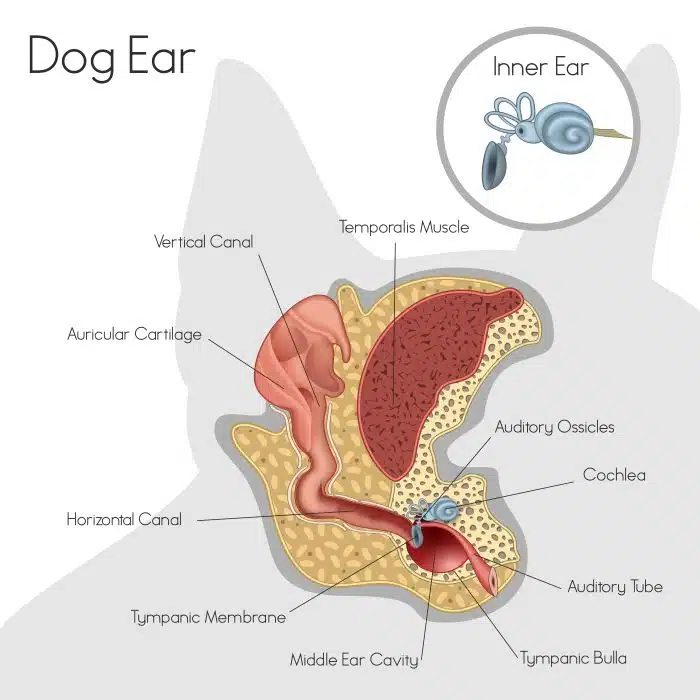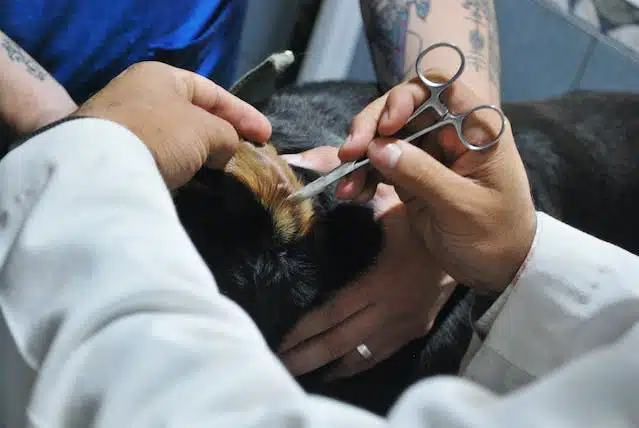Home » Blog » Pet » Pet Health & Safety » Dog Ear Infections: Unravelling the Mystery Behind the Itchiness
Categories
Tags
animal welfare
breed profile
buying a car
buying a pet
Car
car accessories
car care
car features
car insurance
Car safety
car sales
car service
cat
cat behaviour
cat body language
Cat Breeds
cat food
cat insurance
comprehensive car insurance
Dog
Dog Behaviour
dog body language
Dog Breeds
dog food
Dog Insurance
dog training
eco friendly cars
Kitten
New Car
pet accessories
pet activities
Pet Adoption
pet breeders
pet days of the year
pet fun stuff
Pet Health
pet insurance
pet parenting
Pet Safety
pet services
Puppy
rescue pets
road safety
road trip
safe driving
Recent Blog:
Facebook Posts
1 day ago
Growing old sometimes means we can’t take care of pets anymore. Find out some advice on what to do when this happens:![]()
![]() Senior Pet Parents – Contingency Plans for Your Pet – bit.ly/44bzwkS
... See MoreSee Less
Senior Pet Parents – Contingency Plans for Your Pet – bit.ly/44bzwkS
... See MoreSee Less
Senior Pet Parents' Contingency Plans for Pets
www.pd.com.au
Sometimes senior pet parents need more downtime. For older pet owners, this can be tricky to navigate if their dog or cat is full of beans and wants to3 days ago
Before you rev up the engine, let’s run through a checklist of things to do before starting your car. Not only do these steps ensure your safety (and that of others around you), but they also help in maintaining your vehicle's longevity.![]()
![]() Driving Tips: Your Checklist Before Starting Your Car -
... See MoreSee Less
Driving Tips: Your Checklist Before Starting Your Car -
... See MoreSee Less
Driving Tips: Your Checklist Before Starting Your Car
www.pd.com.au
Heading out for a drive? Hold up a second! Whether you're dashing off to work, running errands, or embarking on a road trip adventure, there are a few1 week ago
Are intestinal worms setting up camp in your dog’s gut without paying rent? Here’s how to spot the main culprits and get rid of them too:![]()
![]() Preventing, Identifying and Treating Intestinal Worms in Dogs - bit.ly/43YjCKu
... See MoreSee Less
Preventing, Identifying and Treating Intestinal Worms in Dogs - bit.ly/43YjCKu
... See MoreSee Less
Preventing, Identifying and Treating Intestinal Worms in Dogs
www.pd.com.au
Intestinal worms, such as roundworms in dogs are one of the least glamorous topics on the planet. These intestinal parasites that basically use our dogsSimply saying the words “dog ear infection” can make you cringe. Just thinking about painful, oozing, swollen ears can be bad enough, but actually experiencing an ear infection in dogs is no walk in the park for them. And it’s all too common.
So let’s talk about it, from the symptoms and prevention to treatment and care.
In this article PD Insurance covers each of these as well as why dogs’ ears are so unique. We also explore what could happen if an ear infection in dogs isn’t properly treated.
In this article

Why is the dog ear prone to infection?
The ol’ dog ear infection always ranks high on the list of top PD Insurance claim types – in fact, for last year it was the second most common claim from our customers.
Why, you may ask?
Well, unlike our relatively simple small cup shaped ears, canine ears are intricately designed for superior hearing. In other words, their strength tends to also be their vulnerability.
The incredible dog ear
The canine ear is intricately crafted to capture and interpret sound waves. Dogs hear sounds four times the distance we do and can even pinpoint the location. But having such impressive machinery comes with an expense.
A dog’s ear canal is elongated and forms the shape of a right angle or U-shape to help bounce and calibrate audio-waves. This elaborate design is perfect for capturing sound but unfortunately just as good at trapping debris. Errrgggh.
The good and the bad
This accumulated debris basically ends up as a haven for bacteria, yeast and fungi, leading to the common dog ear infection (also known as otitis).
Not only can dogs get ear infections from different sorts of stuff (bacteria/ yeast/fungi), on top of that they can get ear infections in three different parts (outer, middle and inner) of the ear structure.
Oh boy.

Causes of a dog ear infection
Various health conditions and other factors can disrupt the natural bacterial balance in a dog’s ear, from illnesses to parasites. Some are preventable and some are not.
Common conditions behind it
Let’s look at some examples of ailments that can lead to pet ear infections:
- Allergies (learn how to know if your dog has an allergy)
- Cancer
- Excess moisture
- Hyperthyroidism (an endocrine disease)
- Parasites (like ear mites, which puppies are particularly susceptible to)
- Presence of foreign bodies
- Trauma (injuries like scratches, cuts or bites from other pets or wildlife)
Besides health ailments, breed can play a role too.
Breed as a causal factor
Further to the complex anatomy of dog ears, the anatomy of certain dog breeds increases the risk of ear infection. By this we mean dog breeds with floppy ears. That’s because the ear flaps cover the ears, creating a conducive environment for moisture and bacteria accumulation.
Awww, shame for those cute ears! All the more reason to clean them and keep them dry.

What happens if you don’t treat it?
Firstly, don’t go down that road. If a dog has an ear infection, treat it. Ear infections left untreated can become just as complex as the structure of dog ears. Maybe more…
Ear infection in dogs can lead to serious consequences, including deafness and scarring. This underscores the importance of accurate identification as early as possible, along with the proper treatment.
Whether you’re dealing with a playful puppy, a mature adult dog, or specific breeds predisposed to these dog ear infections, it’s crucial to be well-informed.
Dog ear infection symptoms to watch for
Dogs tend to display a few good giveaway signs when they have an ear infection. Of course, they may also have something more serious – conditions like epilepsy and OCD in dogs can result in similar outward behaviours. This is why it’s important to proceed with caution and check in with your vet for their educated opinion.
Some behaviours that indicate you’re potentially dealing with canine ear infection include:
- Shaking their head. Your dog constantly shaking their head or tilting it to the side can be a sign of infection
- Scratching and rubbing. If your dog frantically scratches or rubs their ears against the floor/furniture
- Bad smell and discharge. Bad-smelling discharge or wax buildup in your dog’s ears is another red flag
- Redness and swelling. Redness / swelling in your pup’s ears can be signs too
Also keep a lookout for any patchy areas on your dog’s ears where they’re missing fur. If any of these symptoms, alone or in combination appear, you’ll likely be dealing with a dog ear infection.

Preventing a dog ear infection
As the old saying goes, an ounce of prevention is worth a pound of cure. This certainly holds true for dog ear infections. By taking a few simple precautions, you can reduce the likelihood of your canine companion suffering an itchy ordeal.
Here are three ways to care for your dog’s ears:
- Regular ear cleaning
Ask your vet to recommend an appropriate ear cleanser to remove wax and debris from your dog’s ears. Be gentle and don’t insert anything deep into the ear canal.
- Keep those ears dry
Moisture is a breeding ground for bacteria and yeast, so ensure your dog’s ears stay dry. After swimming or bathing, gently dry your dog’s ears with a towel.
- Trim those furry ears
For dogs with hairy ears, regular grooming and trimming can help prevent moisture buildup and improve air circulation.

How to treat a dog ear infection without a vet
You can’t! Although you can sometimes prevent a dog ear infection at home, you can’t treat it yourself once it’s set in. Once the infection sets in, your pup needs to see their vet.
Treating a dog ear infection using DIY remedies or over-the-counter products may do more harm than good, especially if the eardrum is ruptured.
After all, that’s why vets train so many years. They’re knowledgeable enough to treat patients that can’t verbalise the issues they’re experiencing. Lean on them, get good advice and take up the right treatment.
How vets remedy otitis in dogs
Vets may do a thorough ear cleaning while your dog is sedated. Depending on the nature and severity of the infection—whether it’s otitis media (middle ear), externa (outer), or interna (inner), different treatment steps may be recommended.
In cases where an underlying condition such as a tumour or endocrine diseases like hyperthyroidism is suspected, the vet may conduct blood tests, x-rays, and scans for a comprehensive diagnosis.
If the infection is likely due to allergies or bacterial overload, the vet may identify the specific bacteria through testing.
Depending on the severity of the infection, your vet could recommend:

Medications
Your vet may prescribe antibiotics, antifungals, or even corticosteroids to combat the infection and reduce inflammation.
Ear drops
Topical treatments like ear drops can help soothe the discomfort and aid in clearing the infection.
Lifestyle adjustments
Your vet may suggest dietary changes or recommend removing potential allergens from your dog’s environment to prevent future infections.
Pet insurance for unexpected vet visits
Establishing a treatment plan is crucial and having a pet insurance plan can ease the financial burden associated with this, as well as the initial testing and diagnosis. PD Insurance’s award winning pet insurance can help cover all these costs as well as prescription medicine, surgery and more. In short, pet insurance can help your pet and your pocket.
The important thing is to have your dog insurance or cat insurance in place before mishaps or illnesses occur (or both – we give discounts to eligible customers for multi-pet policies!). That way you can lean on your vet for their knowledge and skill and lean on your pet’s plan to help reimburse you for the bills.
Click here 👇🏼 to get a quote today.
Share On:




